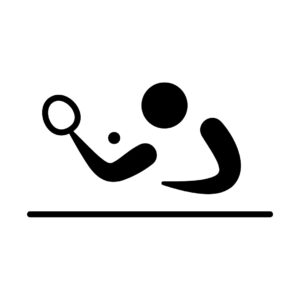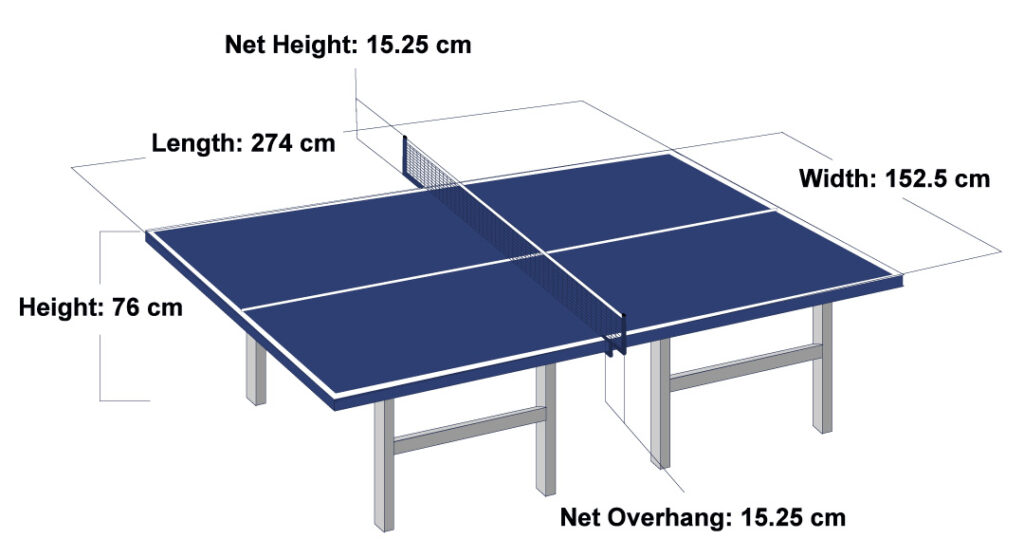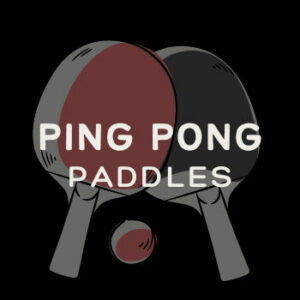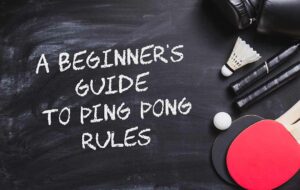Ping pong, also known as table tennis, is a thrilling and fast-paced sport that has gained immense popularity worldwide.
While it may be commonly associated with recreational play and casual backyard matches, table tennis has established itself as a serious competitive sport.
In this article, we will delve into the world of ping pong and explore the question, “Is ping pong a sport?”
Additionally, we will discuss its origins, its significance in the Olympics, and its association with Chinese culture.
The Evolution of Table Tennis:
The history of ping pong, or table tennis, can be traced back to the late 19th century.
The game originated as a parlor activity called “indoor tennis” or “whiff-whaff,” played by upper-class British families.
The early version of the game involved hitting a small ball back and forth across a table with makeshift equipment.
It was often played on dining tables, using books as a net. However, the game lacked standardized rules and equipment.

In 1901, significant developments occurred that shaped the modern game of ping pong.
James Gibb, a British enthusiast, discovered celluloid balls that provided better bounce and spin.
This innovation led to the establishment of the Table Tennis Association, which aimed to standardize the rules and equipment of the game.
The association introduced a set of regulations, including the use of wooden paddles and a net that divided the playing area.
As a result, the game began to evolve into a more structured and recognizable form.
The name “ping pong” was trademarked in 1901, but it wasn’t until 1926 that the International Table Tennis Federation (ITTF) was formed.
The ITTF was established as the governing body for the sport, responsible for organizing international competitions and promoting the development of table tennis worldwide.
Over the years, the sport continued to gain popularity, with more countries participating and embracing the game.
In 1988, table tennis made its debut as an Olympic sport at the Seoul Games, further solidifying its status as a globally recognized and respected sport.
Today, ping pong is enjoyed by millions of players around the world, from casual backyard matches to professional tournaments.
So Is Ping Pong a Sport?
Ping pong is not just a casual recreational activity; it is a recognized sport.
The International Table Tennis Federation (ITTF) governs the sport at a global level and oversees international competitions, including the Olympic Games.
The ITTF ensures that the game is played under standardized rules and regulations, maintaining fair play and promoting a competitive environment.
To be classified as a sport, an activity must possess certain characteristics, such as physical exertion, skill, and competitive elements.
Table tennis checks all these boxes. Players require excellent hand-eye coordination, agility, reflexes, and tactical thinking to excel in the sport.
The intense rallies and lightning-fast exchanges make it a highly physically demanding and mentally challenging game.
Ping Pong as a Racket Sport:
One common question that arises is whether ping pong should be classified as a racket sport.
While it is true that table tennis involves the use of a racket (also known as a paddle or bat), the nature of the game sets it apart from traditional racket sports like tennis or badminton.
Unlike tennis or badminton, where players strive to hit the ball away from their opponents, table tennis emphasizes strategic ball placement, spin variation, and quick reflexes.
The small playing area and rapid exchanges require precise control and delicate touch, making it a unique sport in its own right.
Table Tennis as an Olympic Sport:

Table tennis made its Olympic debut in 1988 at the Seoul Games.
Since then, it has been an integral part of the Summer Olympics.
The sport has gained immense popularity, attracting both participants and spectators worldwide.
The inclusion of table tennis in the Olympics highlights its recognition as a legitimate sport at the highest level of international competition.
Rules of Ping Pong:
Ping pong follows a set of standardized rules that govern the gameplay.
The game is played on a table divided by a net, with two players or teams positioned on opposite ends.
The objective is to score points by hitting a small ball over the net, ensuring it bounces once on the opponent’s side without them successfully returning it.
Each player serves the ball by tossing it upward and striking it with their racket, aiming to land it on the opponent’s side of the table.
The ball must clear the net and touch the opponent’s side within the boundaries of the table.
Players take turns hitting the ball, and the rally continues until one player fails to return the ball, hits it out of bounds, or commits a rule violation.
The game typically consists of several sets, with the first player or team to reach a specific number of points (usually 11 or 21) winning the set.
China’s Dominance in Ping Pong:
It is impossible to discuss table tennis without acknowledging China’s dominance in the sport.
Chinese players have consistently been the most successful in international competitions, winning numerous Olympic gold medals and world championships.
This dominance can be attributed to several factors, including a robust training system, a large player base, and a culture that values discipline and hard work.
While ping pong’s popularity has expanded globally, China’s success has undoubtedly fueled interest and participation in the sport.
However, it is important to note that table tennis is a sport enjoyed by people of all nationalities, and its appeal extends beyond China’s borders.
Is Ping Pong a Sport – FAQ
Is ping pong the same as table tennis?
Yes, ping pong and table tennis are essentially the same sport. Ping pong is a more colloquial term often used in recreational settings, while table tennis is the formal name recognized by official governing bodies.
The rules and gameplay are identical, and the terms can be used interchangeably.
When was ping pong invented?
Ping pong, or table tennis, can be traced back to the late 19th century. The game originated as a parlor activity in England and evolved from a simple back-and-forth hitting game into the structured sport we know today.
The establishment of standardized rules and equipment occurred in the early 1900s, leading to the development of the modern game.
Who invented ping pong?
The specific individual credited with inventing ping pong is debatable since the game evolved over time.
However, it is commonly attributed to British upper-class families who played an early version called “indoor tennis” or “whiff-whaff” in the late 19th century.
James Gibb, a British enthusiast, played a significant role in the game’s development by introducing celluloid balls and promoting standardization.
Is ping pong a Chinese sport?
While ping pong is often associated with China due to its tremendous success in the sport, it is not exclusively a Chinese sport.
Ping pong is enjoyed and played competitively by people from various countries around the world.
China’s dominance in international competitions has undoubtedly contributed to the popularization and global recognition of the sport.
Is ping pong a racket sport?
Yes, ping pong can be classified as a racket sport. Players use a racket, also known as a paddle or bat, to strike the ball during gameplay.
However, the nature of the game differentiates it from traditional racket sports like tennis or badminton.
Table tennis emphasizes precise ball placement, spin variation, and quick reflexes, making it a unique and distinctive sport within the realm of racket sports.
What are the dimensions of a ping pong table?

A standard ping pong table measures 9 feet long, 5 feet wide, and stands 2.5 feet above the ground. The table is divided into two equal halves by a net, with the net height set at 6 inches.
What are the basic rules of ping pong?
The basic rules of ping pong include serving the ball diagonally, allowing the ball to bounce once on each side, and ensuring that the ball stays within the boundaries of the table.
Players must alternate hitting the ball and aim to score points by making their opponent fail to return the ball or commit a rule violation.
How do I improve my ping pong skills?
Improving your ping pong skills requires practice and focus. You can enhance your game by working on your footwork, developing consistent and accurate ball control, practicing different spin techniques, and studying and emulating the strategies of skilled players.
Regular training sessions, drills, and playing matches against various opponents can help you refine your skills over time.
What types of spin can be used in ping pong?
Spin is an essential aspect of table tennis. Common spin techniques include topspin, backspin, sidespin, and combinations thereof.
Topspin creates forward rotation, backspin imparts backward rotation, and sidespin adds lateral spin to the ball.
Mastering different spin techniques allows players to vary the trajectory, speed, and bounce of the ball, adding complexity to their gameplay.
Can I play ping pong alone?
While ping pong is traditionally played with two or four players, it is possible to practice and enjoy the sport alone.
There are various solo training exercises and drills that can help you improve your skills, such as hitting against a wall, using a table tennis robot, or utilizing specialized equipment designed for solo play.
These activities can enhance your hand-eye coordination, footwork, and stroke consistency even without a partner.
Conclusion:
In conclusion, ping pong, or table tennis, is undoubtedly a sport that encompasses physical skill, mental acuity, and intense competition.
Its recognition by international governing bodies and inclusion in the Olympic Games solidify its status as a legitimate sport.
While China has undeniably dominated the sport, table tennis is enjoyed by people of diverse backgrounds worldwide.
So, the next time you pick up a ping pong paddle, remember that you are participating in a thrilling and respected sport with a rich history and global significance.



